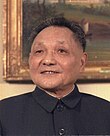History




The Communist University of the Toilers of the East (KUTV) was established in 1921 in Moscow by the Communist International (Comintern) as a technical college for communist cadres from the Soviet periphery, though it also matriculated students from the Arab world, Africa, and East and South Asia.[1] The school officially opened on 21 October 1921. It performed a similar function to the International Lenin School, which mainly accepted students from Europe and the Americas. It was headed in its initial years by Grigory Broydo, later First Secretary of the Communist Party of Tajikistan.[1][2] The curriculum included both theoretical and practical matters, including Marxist theory, party organization and propaganda, law and administration, theory and tactics of proletarian revolution, problems of socialist construction, and trade union organization.[citation needed]
From summer 1922, the KUTV had regional branches in Baku (in Azerbaijan), Irkutsk (in Siberia, Russia), and Tashkent (in Uzbekistan). The University published Revolutionary East (Революционный Восток, Revoliutsionnyi Vostok). Amongst those who taught there were Ho Chi Minh, Anatoly Lunacharsky, Leonid Krasin, Mikhail Pokrovsky, Khalid Bakdash, Igor Reisner, and Boris Shumyatsky.
In 1928, the Japanese Foreign Ministry estimated that some 1,000 foreign students studied at KUTV, and that the 400 Chinese students comprised the largest group, followed by 350 ethnic minorities within the Soviet Union, and between 30 and 40 Japanese. The Soviet Union solicited working-class Japanese to study at the KUTV without the Japanese government's consent. The Japanese students studied under Sadaki Takahashi and Keizo Yamamoto, along with several Russian instructors. The Japanese students studied economics, the history of world revolution, Leninism, philosophy, labor union theory, and Japanese studies. Kyuichi Tokuda, a member of the Japanese Communist Party, was instrumental in recruiting and sending these Japanese workers to KUTV via Shanghai and Vladivostok.[3]
The KUTV published a journal entitled Revolutsionnyi vostok (Russian: Revolutionary East) between 1927 and 1938.[4]
The University was closed in the late 1930s. A report from the University of Virginia notes:
KUTV came to an end during the Great Terror of 1937-38, together with many Comintern institutions and cadres. A sizeable proportion of its faculty and Moscow-based alumni was arrested and even executed, dealing a major blow to Soviet expertise.[5]